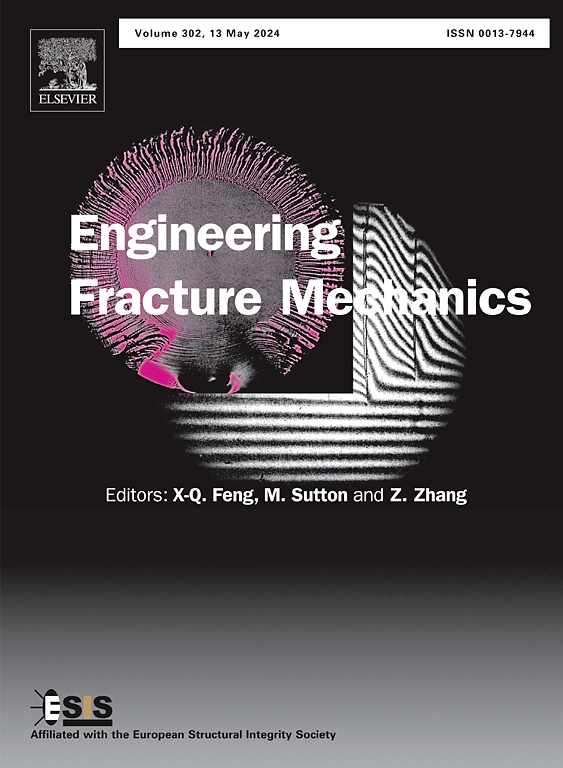An efficient explicit–implicit adaptive method for peridynamic modeling of quasi-static fracture formation and evolution
IF 4.7
2区 工程技术
Q1 MECHANICS
引用次数: 0
Abstract
Understanding the quasi-static fracture formation and evolution is essential for assessing the mechanical properties and structural load-bearing capacity of materials. Peridynamics (PD) provides an effective computational method to depict fracture mechanics. The explicit adaptive dynamic relaxation (ADR) method and the implicit methods are two mainstream PD approaches to simulate evolution of quasi-static fractures. However, no comprehensive and quantitative studies have been reported to compare their accuracy and efficiency. In this work, we first develop an implicit method for bond-based peridynamics (BBPD) based on the full nonlinear equilibrium equation and the degenerate form of the bond failure function, where the Jacobian matrices are derived using the Newton–Raphson (NR) scheme. Subsequently, we analyze the solvability of the implicit BBPD scheme. Second, a consistent and comprehensive comparison of accuracy and efficiency of the explicit ADR and implicit methods is conducted, which reveals computational efficiency of the implicit methods and their limitations in accurately describing crack formation. Finally, by utilizing the unique advantage of both methods, we develop an adaptive explicit–implicit method and propose a switching criterion to deploy appropriate scheme accordingly. Four typical quasi-static problems are employed as the numerical experiments, which show the acceleration ratios of the current method range from 6.4 to 141.7 when compared to the explicit ADR. Therefore, the explicit–implicit adaptive method provides a powerful method to simulate quasi-static fracture formation and evolution.

准静态裂缝形成与演化的一种有效的显隐自适应方法
了解准静态断裂的形成和演化过程对于评估材料的力学性能和结构承载能力至关重要。围动力学(PD)为描述断裂力学提供了一种有效的计算方法。显式自适应动态松弛法(ADR)和隐式方法是模拟准静态裂缝演化的两种主流PD方法。然而,目前还没有全面和定量的研究报告来比较它们的准确性和效率。在这项工作中,我们首先基于全非线性平衡方程和键破坏函数的退化形式开发了基于键的周动力学(BBPD)的隐式方法,其中雅可比矩阵是使用牛顿-拉斐尔(NR)格式导出的。随后,我们分析了隐式BBPD格式的可解性。其次,对显式ADR方法和隐式ADR方法的精度和效率进行了一致和全面的比较,揭示了隐式ADR方法的计算效率及其在准确描述裂纹形成方面的局限性。最后,利用这两种方法的独特优势,我们开发了一种自适应显式-隐式方法,并提出了相应的切换准则来部署适当的方案。采用4个典型的准静态问题进行数值实验,结果表明,与显式ADR相比,当前方法的加速度比在6.4 ~ 141.7之间。因此,显式-隐式自适应方法为模拟准静态裂缝的形成和演化提供了一种强有力的方法。
本文章由计算机程序翻译,如有差异,请以英文原文为准。
求助全文
约1分钟内获得全文
求助全文
来源期刊
CiteScore
8.70
自引率
13.00%
发文量
606
审稿时长
74 days
期刊介绍:
EFM covers a broad range of topics in fracture mechanics to be of interest and use to both researchers and practitioners. Contributions are welcome which address the fracture behavior of conventional engineering material systems as well as newly emerging material systems. Contributions on developments in the areas of mechanics and materials science strongly related to fracture mechanics are also welcome. Papers on fatigue are welcome if they treat the fatigue process using the methods of fracture mechanics.

 求助内容:
求助内容: 应助结果提醒方式:
应助结果提醒方式:


